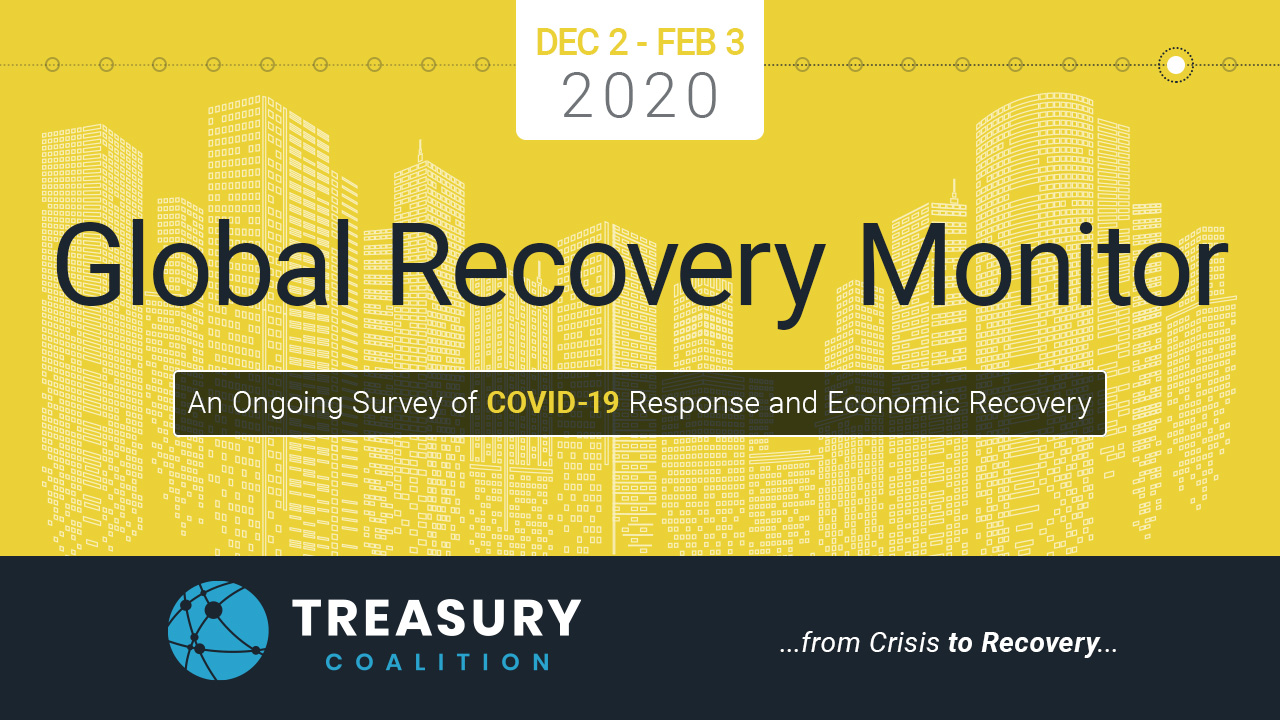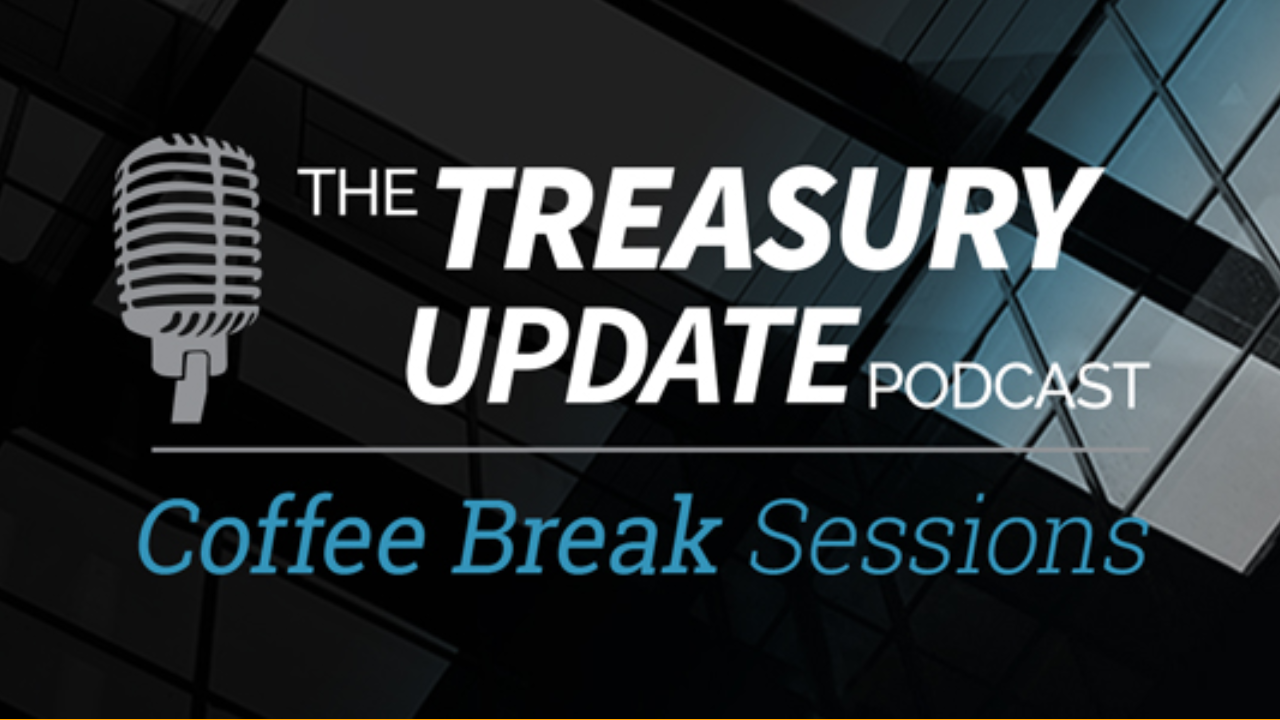
Session 30
Coffee Break Session:
What Is a Lockbox?
What is a lockbox? Coffee Break Session Host Alexa Cook catches up with Craig Jeffery, Managing Partner at Strategic Treasurer, to discuss what treasurers need to know about lockboxes. They cover what lockboxes are, how they differ in form, and why companies typically use lockboxes. Listen in and learn a little bit about lockboxes.
Host:
Alexa Cook, Strategic Treasurer


Speaker:
Craig Jeffery, Strategic Treasurer


Episode Transcription - Episode 30 - What is a Lockbox?
Alexa Cook:
Hey guys, welcome to the Treasury Update Podcast Coffee Break Session, the show where we cover foundational Treasury topics and questions in about the same amount of time it takes you to drink your coffee. This is your host, Alexa Cook, joined again with Craig Jeffery, manager partner at Strategic Treasurer. Welcome back Craig.
Craig Jeffery:
Good day Alexa.
Alexa Cook:
Thanks again for joining us. Today we’re going to just jump right in and cover what is a lockbox. So, Craig, what is a lockbox?
Craig Jeffery:
A lockbox is a service that helps on the collection side, with collection activities. It’s either provided by a bank or a third party service provider. What they did historically was they would take checks that would be mailed in envelopes and it would be sent to a Post Office box that the bank would pick up the information or the third party would pick up the information, take care of opening everything up, follow a set of procedures, and deposit the checks on behalf of the company. So it was an outsourcing of the cash receipt process.
Alexa Cook:
Okay. So that I guess leads to my next question, because you said typically they would follow these procedures to open these envelopes, follow the procedures, and then deposit these checks. Are all of these lockboxes physical, because checks in this process sounds a little bit dated, but I could be wrong?
Craig Jeffery:
Well, yeah, I was trying to give a simple definition. They’ve certainly changed over time. There used to be two types of lockboxes, then there was three, and then there was an additional number. It used to be there were retail oriented lockbox geared for consumers, who would… They’d get a bill and there would be a remittance stub, a piece of paper that you’d stick back in the envelope and stick your check behind it, and they would have a certain way of processing those that could be machine readable to read and post to the accounts.
Craig Jeffery:
Then there were wholesale, which were largely business to business payments, where checks would come in that might have information printed on the stub. That was usually aligned with people typing information or using OCR to capture the data so that it could post to a receivable system in the B2B environment.
Craig Jeffery:
Then there were wholetail, which is too much for today’s podcast to get into that mess. But this has also been let’s say supplanted to an increasing measure with these integrated lockboxes or virtual lockboxes, where there’s physical items coming in, i.e. checks, and to those that are outside of North America, yes, there’s still quite a few being processed in decreasing measure.
Craig Jeffery:
But an integrated lockbox will merge information that come in electronically, whether it’s wire, ACH, and even card, and then the third party provider or the customer’s bank will take this information and merge it into a file that can be applied to the receivable system. So these ACH payments, these wire payments came in, now you’ve got a single posting file to relieve the receivables on your AR platform.
Craig Jeffery:
So as you convert people from the horrible paper methods… I know some people love the paper methods, but as you convert them over you no longer have as many changes happening on your side, so the fact that some people will pay by checks, others will open to paying by ACH, wire, card, other payment methods, now your receivable platform gets a single stream in that posts, so when the mix changes you’re not having to worry about I’ve got to reallocate people from this area to this other area, make some changes between the two.
Alexa Cook:
My next question was going to be what was the difference between the different types of lockboxes, but I feel like you really just kind of covered that. I don’t know if you wanted to add anything else to some of the differences there?
Craig Jeffery:
Maybe I’ll take it from the why would people use these, what are the reason for the lockbox in light of those two different environments, this idea of if I want to use a lockbox why am I doing that. I want to remove slack from the system is one reason, and we can refer to that as float, mail float, processing float, collection or availability float. That’s for the typical check, the letter and check.
Craig Jeffery:
It’s faster, it’s processed better, and you also don’t have to worry about trying to keep your staff at certain levels, so it helps with removing slack from the process, which helps not only your cash flow and liquidity, but it also helps with your customer relationships, because AR is being relieved earlier, you’re not sending dunning notices or shutting off services.
Craig Jeffery:
But it also helps with business continuity, this idea of someone else is processing all that. That means the headache of staffing peaks and valleys shifts over to someone else, which is quite good. That’s a key area for why you would use a lockbox, and why you would use an electronic lockbox is you want to make your transition as people move to more electronics smooth. So you’ve isolated the impacts and have someone else take care of the headaches, and they can specialize in it and make a good business out of it.
Alexa Cook:
All right. I think we’re at about time, so let me do a quick recap of everything. What is a lockbox? It’s really a service either provided by a bank or a third party service provider. Traditionally it used to take checks either in an envelope, and then it opened them and followed a set of procedures and then deposited them. Again, this was usually a third party service.
Alexa Cook:
But now there’s a few different types of lockboxes. They’re not always physical, which is I think how they started in origin. Some of them still are receiving physical checks, but this is definitely decreasing in measure. There is now virtual ones. These are still taking in payments, but now they’re putting them into a single file and then sending them in one posting file to the recipients. So this is beneficial for the receivable platform because it’s just getting one file in regardless of the payment mix, which is nice.
Alexa Cook:
To kind of wrap this up, why would people use lockboxes? Essentially this would remove a lot of the slack or the float from the system and really it just makes things a lot more faster and more efficient.
Alexa Cook:
Did I skip anything on that quick recap or is there anything else you wanted to add?
Craig Jeffery:
No. I think everything was right. Part of the reason for using it is for the slack, but also the business continuity piece. You don’t have to invest in the hardware to process things efficiently. It’s just a nice way of shifting it over to your bank or a third party instead of trying to do all that in house.
Alexa Cook:
Okay. Thank you for joining me today Craig, and thanks to all of our listeners for tuning in this week, and as a reminder make sure you tune in every first and third Thursday of the month for a new episode. As always, if you wanted to reach out with any comments, questions or just to say hi, you can send us an email at podcast@strategictreasurer.com. Thanks again for joining us today Craig.
OUTRO:
This podcast was provided for informational purposes only and statements made by Strategic Treasurer, LLC on this podcast are not intended as legal, business, consulting or tax advice. For more information visit and bookmark strategictreasurer.com
Global Recovery Monitor
Join Strategic Treasurer and the Treasury Coalition as we track the impact of COVID-19 and the subsequential events on the treasury industry. Complete the 5-minute survey and receive the results report before it is publicly released!
Coffee Break Sessions – A Treasury Update Podcast Series
A part of the Treasury Update Podcast, Coffee Break Sessions are 6-12 minute bite-size episodes covering foundational topics and core treasury issues in about the same amount of time it takes you to drink your coffee. The show episodes are released every first and third Thursday of the month with Special Host and Treasury Consultant Alexa Cook of Strategic Treasurer.




